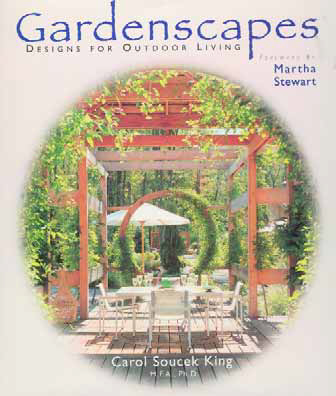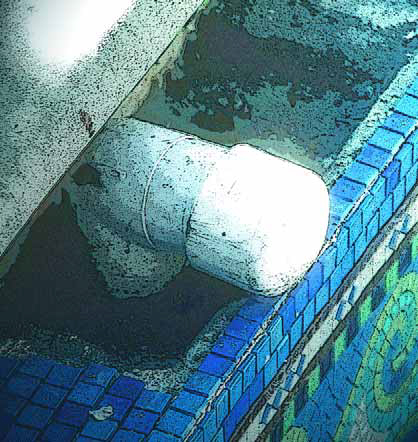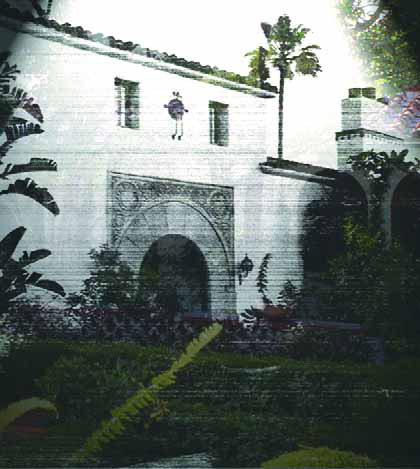We've all heard the phrase "less is more" so often that it's become a cliché, but there are still situations where there is powerful truth in those words. There is no question, for example, that watershapers can create tremendous beauty by using simple shapes and quality materials to accentuate and magnify a setting. This is particularly so when the watershaper exploits the alluring, reflective qualities of water itself to create a strong focal point while effectively blending the vessel into its setting. A case in point is the
When I was a kid, I was obsessed with hot rods. I suspect this resulted from my dad's subscriptions to magazines such as Road & Track and Street Rod: I was mesmerized by
It's a setting of searing beauty and now features a home that is unquestionably a work of art. Designed by renowned architect Helena Arahuete of Lautner & Associates (Hollywood, Calif.), the structure sits on a privately owned, 2,000-foot-tall mountain known as Twin Sisters Peak - just part of an 1,800-acre estate in Solano County, Calif., that offers clear vistas of the Pacific Ocean, Golden Gate Bridge, San Francisco Bay, the Sacramento Valley, Napa Valley and the Sierra Madre Mountains as you turn around the compass. In the great tradition of "organic architects" from Frank Lloyd Wright through to Arahuete's mentor and long-time collaborator, the late John Lautner, the home takes full advantage of its setting, crowning the mountaintop with a glass-and-concrete hexagon that at once beautifies and harmonizes with the landscape. So fascinating is this structure and so prominent is its location that, during construction and ever since, private
It's a setting of searing beauty and now features a home that is unquestionably a work of art. Designed by renowned architect Helena Arahuete of Lautner & Associates (Hollywood, Calif.), the structure sits on a privately owned, 2,000-foot-tall mountain known as Twin Sisters Peak - just part of an 1,800-acre estate in Solano County, Calif., that offers clear vistas of the Pacific Ocean, Golden Gate Bridge, San Francisco Bay, the Sacramento Valley, Napa Valley and the Sierra Madre Mountains as you turn around the compass. In the great tradition of "organic architects" from Frank Lloyd Wright through to Arahuete's mentor and long-time collaborator, the late John Lautner, the home takes full advantage of its setting, crowning the mountaintop with a glass-and-concrete hexagon that at once beautifies and harmonizes with the landscape. So fascinating is this structure and so prominent is its location that, during construction and ever since, private
Truly a large-scale project full of unique technical challenges in an unusual and important civic setting, the renovation of the watershapes at Jambalaya Park in Gonzalez, La., is easily the most unusual project our firm has ever tackled. The park covers seven beautifully wooded acres in an older section of town that's mostly residential but sits directly behind City Hall and several other smaller civic buildings. It takes its name from the fact that the city is known as the world's "Jambalaya Capital" and annually hosts a week-long festival celebrating the Cajun stew that has become a star in the
To residents of St. Louis, Forest Park is a civic treasure on the order of New York's Central Park - which, locals are quick to point out, is smaller than their favorite park by 500 acres. Established in 1876 at the heart of the city, Forest Park has a similarly grand and glorious history, including service as the site of the renowned 1904 Louisiana Purchase Exposition & World's Fair, which drew more than 20 million visitors from across the globe. Through the years, the park's 1,370 acres have become "home" to such major attractions as the world-famous Saint Louis Zoo as well as the city's art museum, science center, planetarium, history museum and The Muny, the nation's largest outdoor theatre. Forest Park is also home to the
It's one of the most horrific things that can happen to anyone who enters a pool or a spa: One moment you're having fun or relaxing, and in a terrible instant you're caught in a devastatingly painful and potentially fatal situation. Most people who become entrapped by pool, spa or wading-pool plumbing do survive, but all too often they suffer life-altering injuries. As with any aquatic safety issue, we all agree these incidents should be prevented, and a great many talented people from government, trade associations, research institutions, equipment manufacturers and consumer-safety groups have invested a tremendous amount of time in examining suction entrapment. For all of that effort, however, seeing our way to
The famous landscape architect Thomas Church was known to proclaim, "I have no style." What he meant was, rather than impose a style that was characteristically his on a project, he preferred to let the home, site and clients guide the stylistic details of his work. I've always admired Church and other designers who are willing and able to move comfortably across the style spectrum in accordance with the situation. This is certainly how I've chosen to approach my own design work, even when I find the huge range of possibilities a bit perplexing. To be able to work in such a malleable way, of course, you need to be familiar with an array of styles and comfortable with the nuances of classifications stretching from traditional to
Now we come to the finishing touches - little details that make a big difference in the ultimate appearance of the renovated pool we've been watching develop here for the past several months. Through those many months, we've taken a pool that's more than 70 years old, rerouted all of its plumbing through cores cut in the old shell, added a circular spa in the shallow end, raised the floor in the deep end, reshaped the steps, added lights in a new, pool-long bench, installed all-new equipment and laid down gorgeous glass tile throughout - all without disturbing the beautiful limestone decking that surrounded the pool. As the project came to a close, we turned to a final
Here in America, our idea of history goes back only so far. That's particularly true in southern California, where "older" architecture is anything before about 1960 and very few structures date to a time before 1920. But it's also the case for most of the rest of the country with reference to architecture: We don't have the "ancient" structures that still set the tone and architectural vocabulary the way they do in Europe, Asia and other places. For those who prefer modern or contemporary styles, this lack of history may be irrelevant. For those who feel an affinity to older styles, however, there's a tendency to cringe every time an older house is torn down to





















